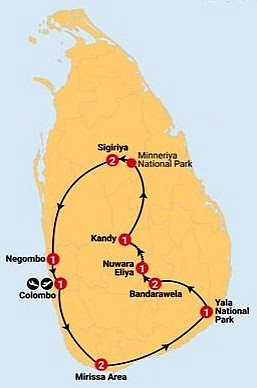In February 2023 we joined an organised tour to Sri Lanka.


Beginning in the capital Colombo, on the west coast, our bus travelled anticlockwise, in a loop, initially along the coast; then up into the highlands; then north, as far as Sigiriya; before returning southwest to Colombo.
I was surprised by Colombo. I was expecting it to be more like Mumbai or perhaps Kochi in southern India, yet it is noticeably more developed, clean, and tidy. Some might say 'lacking in colour'.
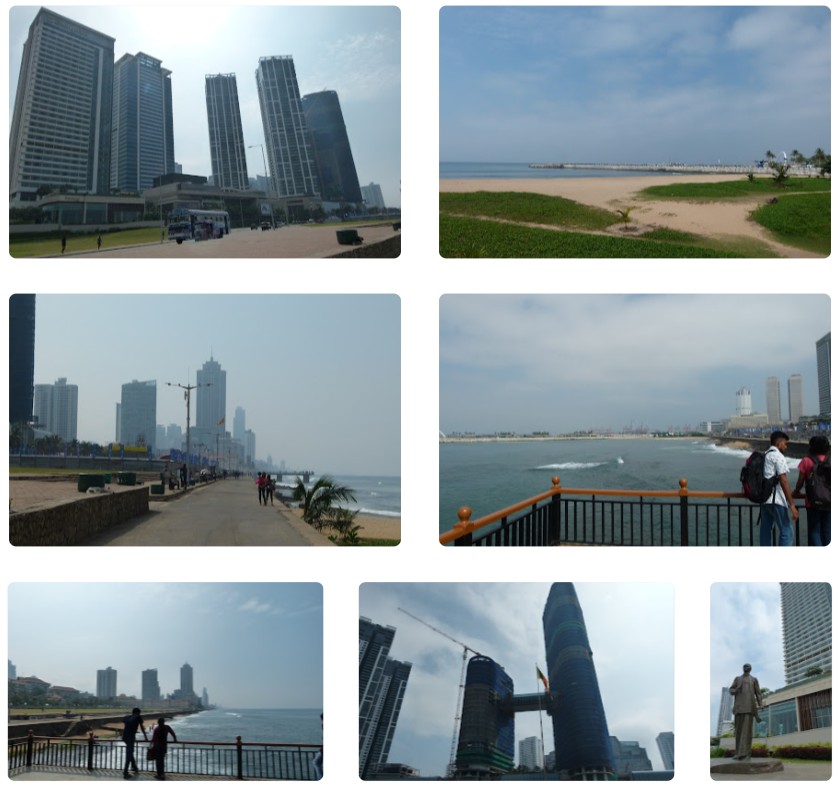
Sri Lanka is a leading economy in its region, when measured by most economic and social indicators, on a per capita basis.
It has a population of 22 million. So, it's small by comparison. Yet, on a per capita basis, its level of development is just behind Indonesia.
In development, it leads India and the Philippines; and is well ahead of Pakistan, Bangladesh and Myanmar (in dreadful disarray). This is despite a relatively recent civil war (until 2009), the Covid Pandemic and some perhaps dubious presidential economic decisions?
Of course, it's put into the shade by Thailand, Malaysia, Hong Kong and Singapore (that is developmentally ahead of most or Europe).
As you will see in the pictures that follow, the infrastructure is extensive and well maintained and countryside is generally well-kept, if a little in need of some TLC here and there.
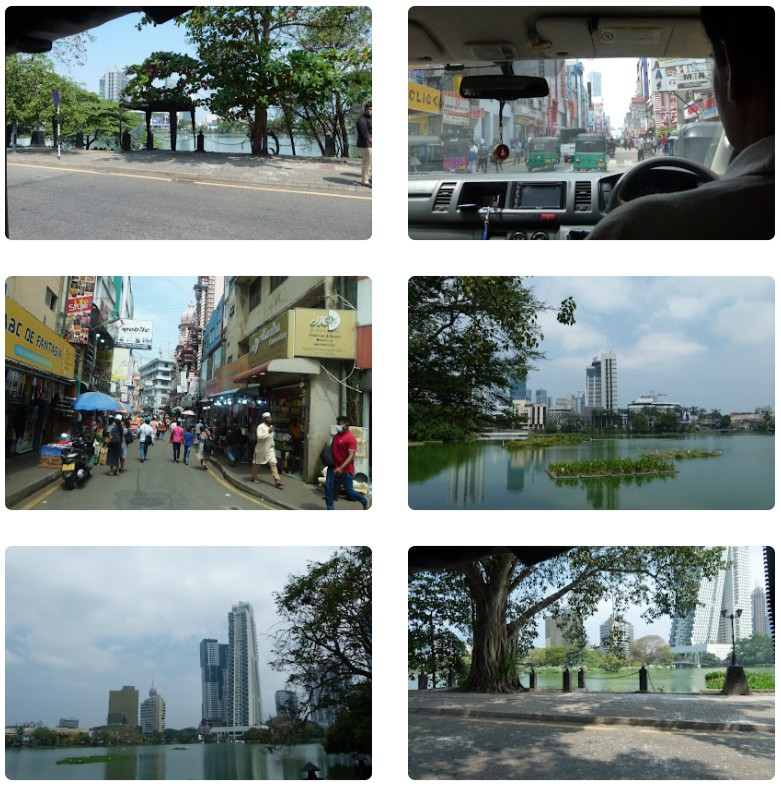
We spent the first day in Colombo, with its modern buildings and Buddhist Temple, complete with a lock of hair from the Buddha. Sri Lanka is Buddhist country and, as our later guide didn’t tire of telling us, Buddhism is an atheistic philosophy of being, not a religion. So, he told us, when people need to pray for divine intersession in their lives, they have to turn to a religion with a God or Gods. He, for example, is a Roman Catholic and a Buddhist. I’m not sure what the Pope or the Inquisition might say about this. But many people here are both Buddhist and Hindu, hence Ganesh in a Buddhist temple.
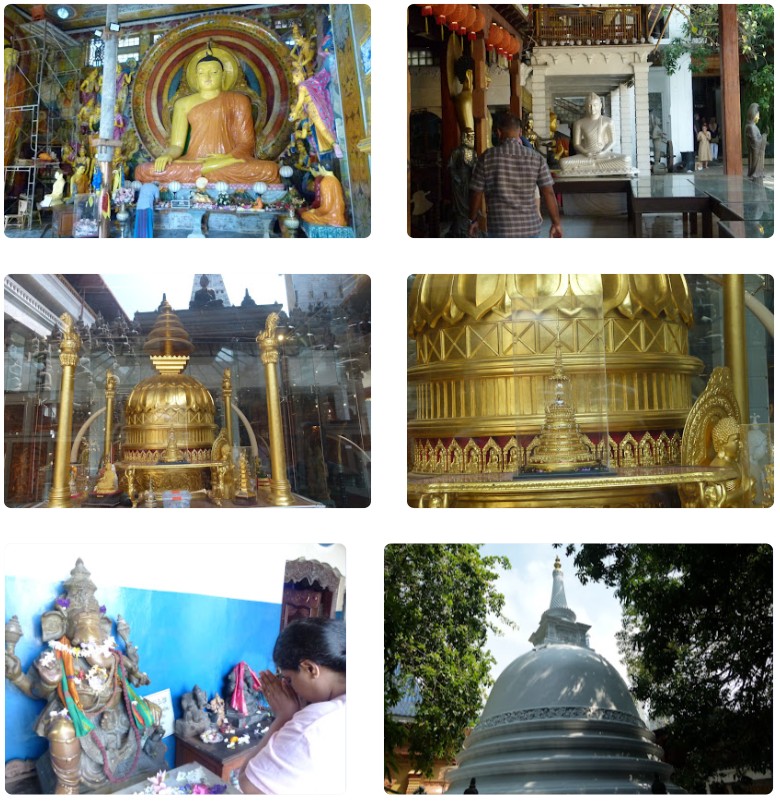 In the centre is a Sacred Hair Relic of the Supremely Enlightened Buddha said to possess miraculous powers
In the centre is a Sacred Hair Relic of the Supremely Enlightened Buddha said to possess miraculous powers
Below is Independence Memorial Hall, a national monument in Colombo built to commemorate of the independence of Ceylon from British rule on 4 February 1948, when full governing responsibility passed to the Ceylonese-elected (unicameral) legislature.
Partial local rule by a Congress had existed since 1919, followed by the Legislative Council of Ceylon. Then, in 1931, the State Council of Ceylon was established with universal adult franchise.
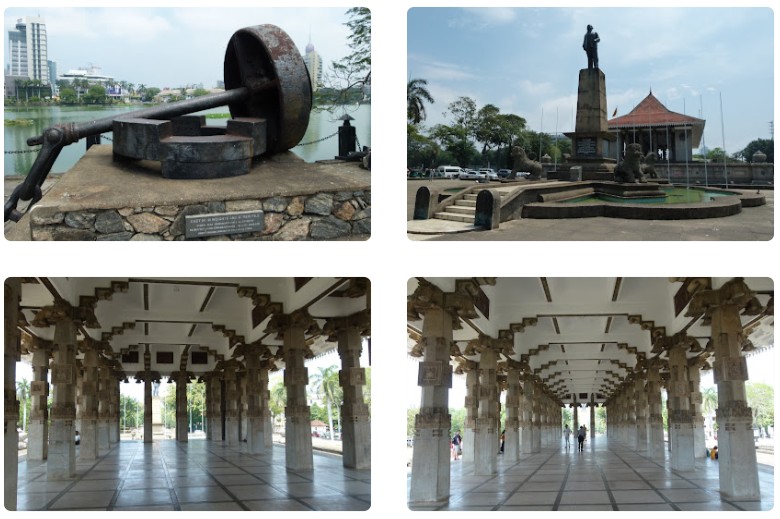
Therein lay the seeds of troubles to come, because of the strong ethnic, religious and language differences between the Singhalese and Tamil populations. The universal franchise meant that the minority Tamils were out-ruled on every point of difference and there was no 'house of review' to protect regional interests. After independence, these tensions escalated, not helped by Indian intervention on behalf of the Tamils who wanted an independent state.
After independence nationalism prevailed (what have the British done for us?). In 1965 popularist S.W.R.D. Bandaranaike was elected prime minister. When he was assassinated three years later, his wife, Sirimavo Bandaranaike took his place, becoming the world's first female prime minister. Between them they actively strove to erase British influence and promoted the Buddhist religion and Sinhalese language and culture.
In addition to nationalizing various economic enterprises and imposing land reform, Bandaranaike's government enforced a law making Sinhalese the sole official language, further alienating many in the country’s large Tamil minority.
In 1972 following a Marxist insurrection, Bandaranaike introduced a new constitution creating an executive presidency and making Ceylon into a republic, renamed Sri Lanka.
But the new Republic fell victim to economic stagnation. As a result, Bandaranaike lost power in 1977.
None of this improved ethnic tensions. As a result, between 1983 and 2009 all-out civil war erupted, aimed at establishing an independent Tamil State, with the infamous ‘Tamil Tigers’ becoming terrorist bombers.
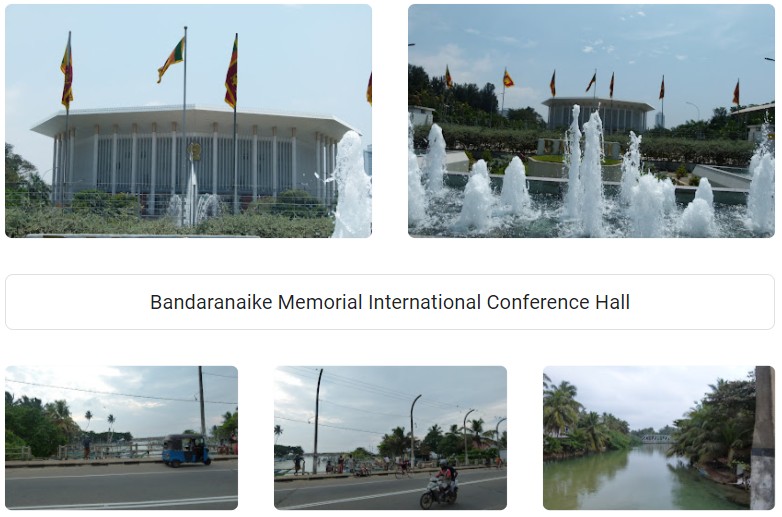
Meanwhile, both Bandaranaike's son and daughter were politically influential.
In 1994. Chandrika, her daughter won the presidential election, becoming the country’s first female president. Chandrika promptly appointed her mother, Sirimavo, to serve as prime minister in her new government. Together they mounted a major military campaign against Tamil separatists. It was not for another fifteen years, and in other hands, that peace was restored.
Yet it's not clear that it's fully resolved Tamil grievances.
From here, on day two, we headed south, down the coast stopping at a turtle hatchery where thousands of turtles of several different species are given a leg-up on life before, in most cases, being eaten by predators, including humans.
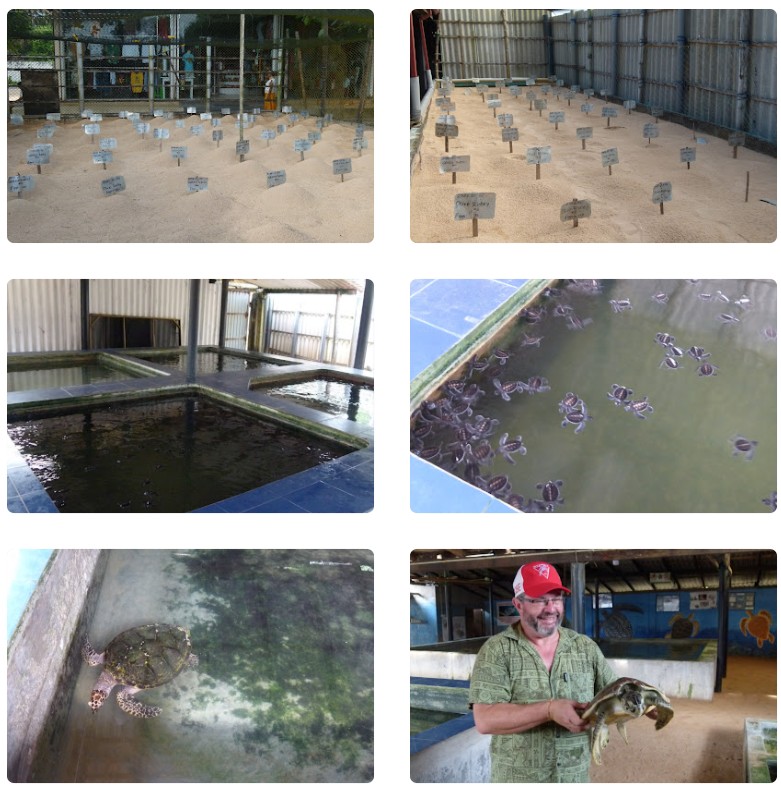
Mirissa
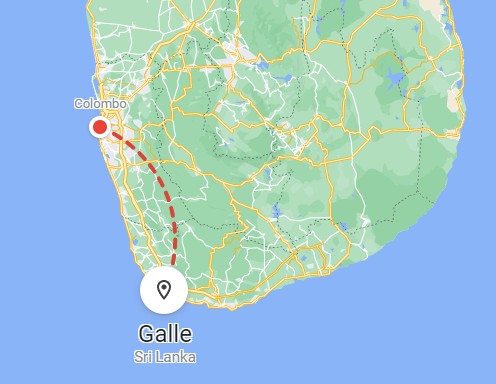
We then continued around the coast to the enormous Calle Fort: begun by the Portuguese; taken by the Dutch East India Company; and then finally taken and made impregnable to further attack by the British East India Company. The British Company subsequently defeated the young successor to the warlike local monarch of Sigiriya, who had proven invulnerable to the Portuguese and Dutch.This ancient monarchy is now a matter of pride in Sri Lanka, as later pictures in this album of the palace ruins attest.
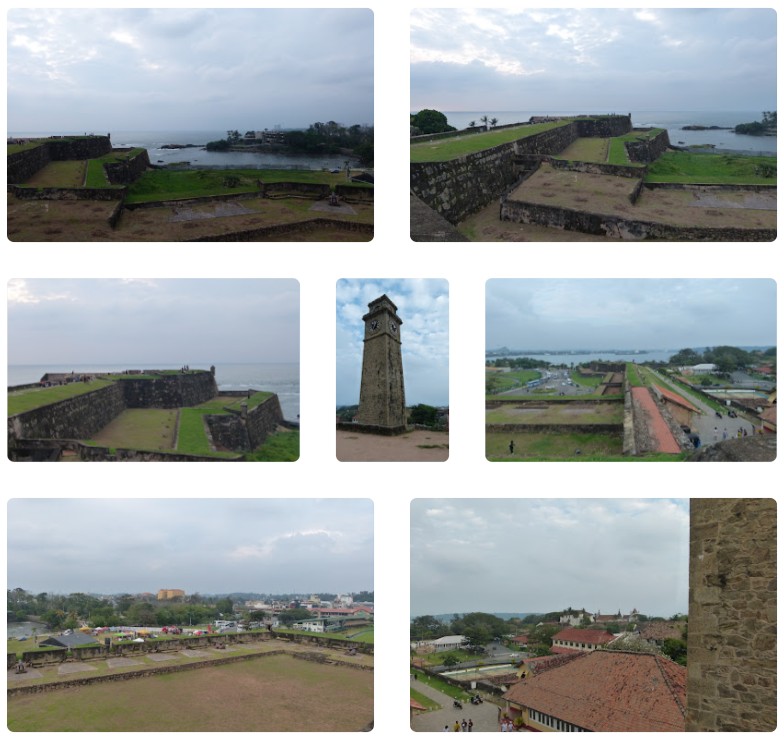
After the Indian Mutiny (1857), as a result of which a good deal of the shareholders assets were collaterally damaged, the East India Company was wound up (in 1874). Ceylon - like Burma and India, that then included Pakistan and Bangladesh, now fell directly under the Crown (Queen Victoria) and joined Canada, the colonies in Australia, New Zealand and South Africa as part of the British Empire. Victoria thus became an empress, equal in rank to her eldest daughter, Victoria, empress of Prussia.
Yala National Park

Heading further around the south coast we reached the first of the National Parks (Yala), famous for the variety of wildlife, in particular leopards.
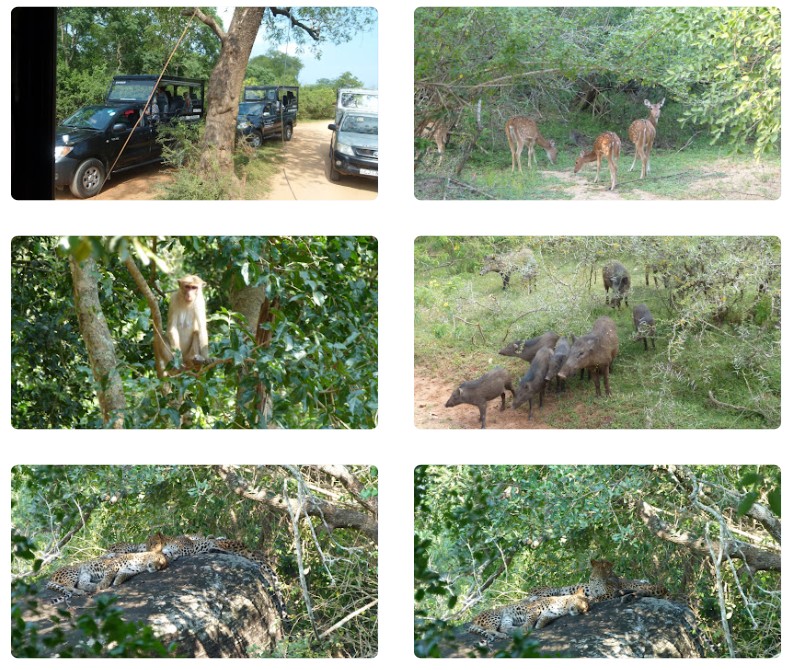
These thrive as there is a plenitude of prey including: rabbits; spotted deer; and young bore (piglets) not to mention those delicious peacocks, that have adorned many a royal table. Yet they do tend to flutter off.
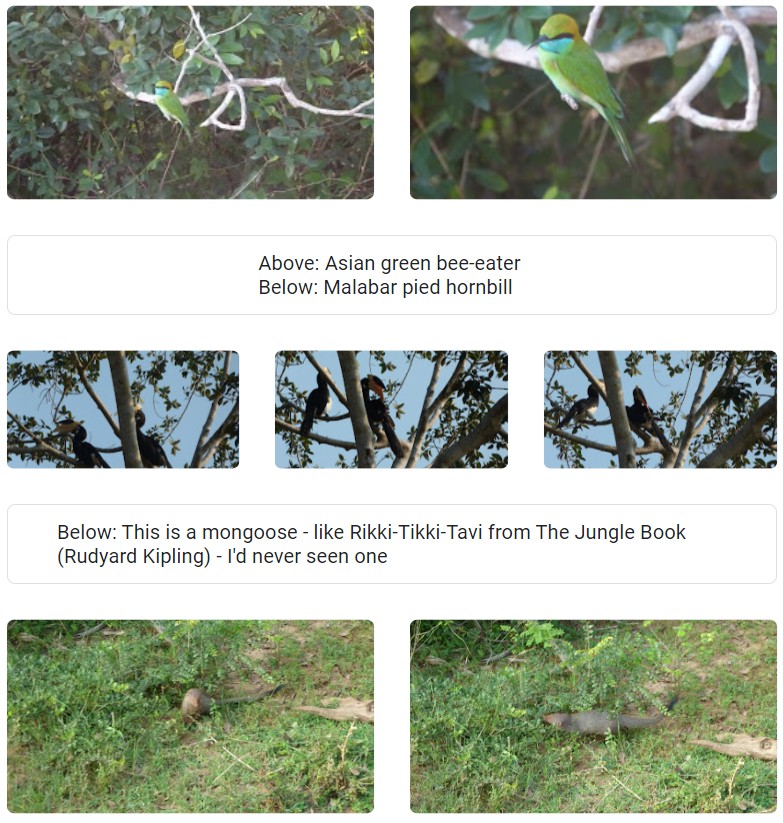
Buffalo; crocodiles (that seem to coexist); and elephants are probably an even tougher proposition for a quick snack.
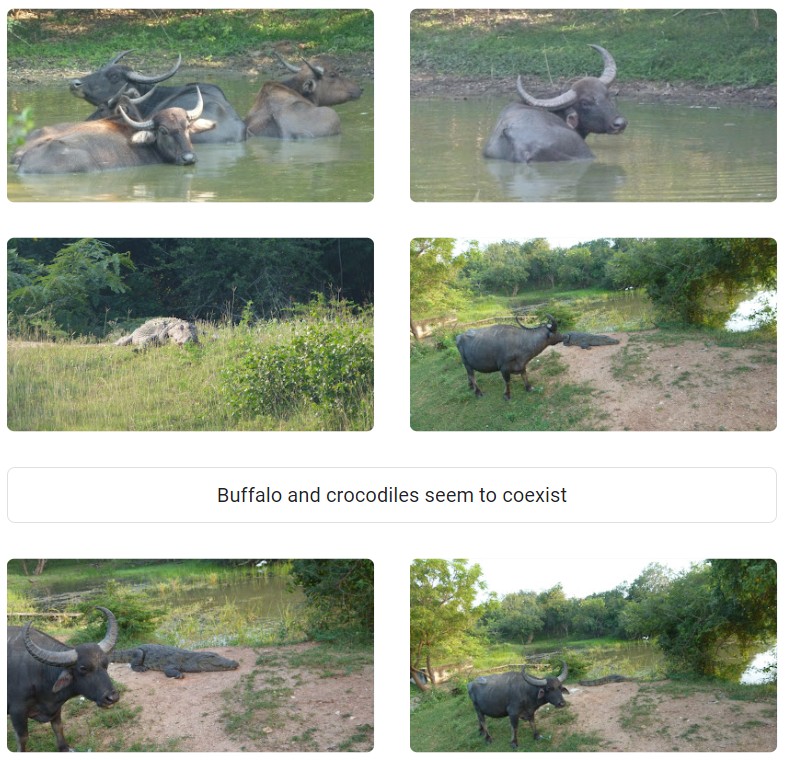
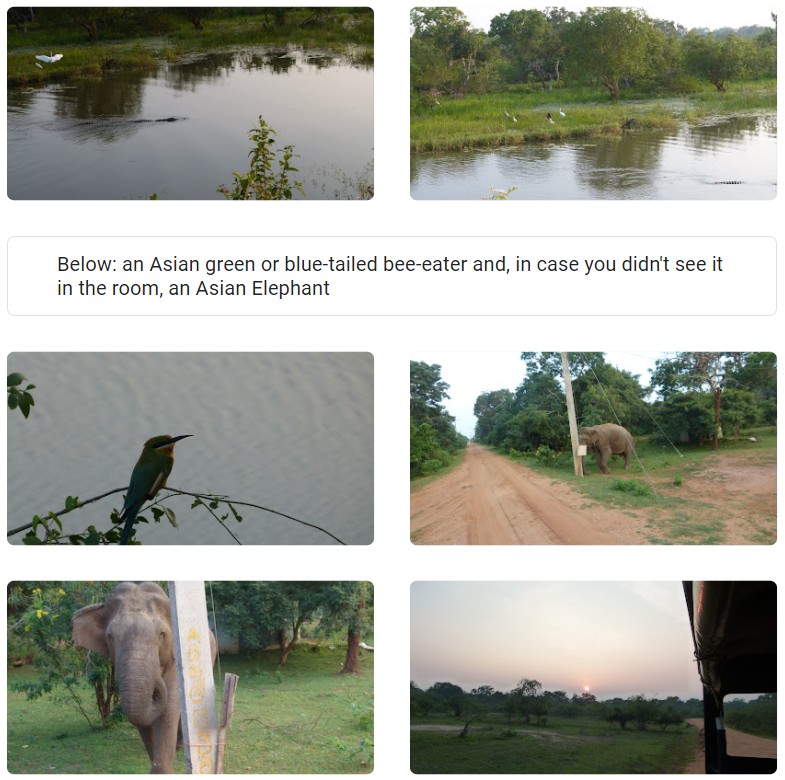
The Magampura Eco Village Resort is comfortable but like much of Sri Lanka, after the lean covid years, could use a bit of maintenance here and there.
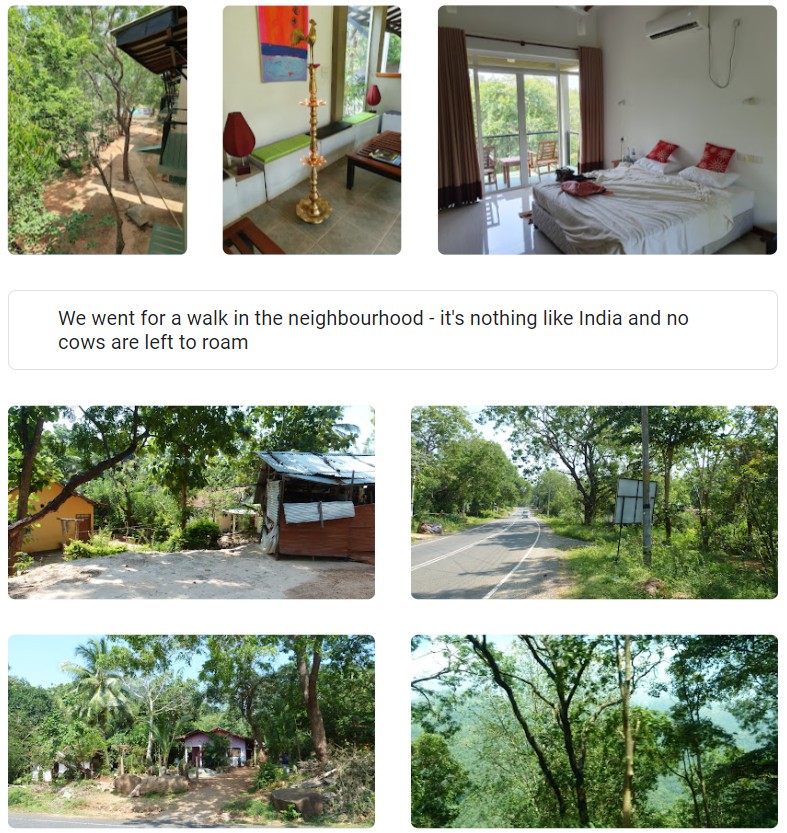
Throughout the country electricity distribution is well engineered, predominantly overhead lines on concrete poles, presumably because of the termites.

High voltage transmission is at 220 KV and 132 KV. The local distribution grid is typically 11KV, dropping to 230/400 at 50 cycles for domestic use.
But we did experience several brief blackouts. I looked it up.
The IEA tells me: "Sri Lanka’s primary energy supply mainly comes from oil and coal. Almost 40% of Sri Lanka’s electricity came from hydropower in 2017 but coal’s shares in power generation has been increasing since 2010. Sri Lanka is reaching universal access to electricity but clean cooking remain an issue with 15 million people still relying on biomass to cook."
Bandarawela
The following day we wound our way up into the highlands stopping at a waterfall, with an interesting way of saving the environment, to the British built Nine Arch Bridge.
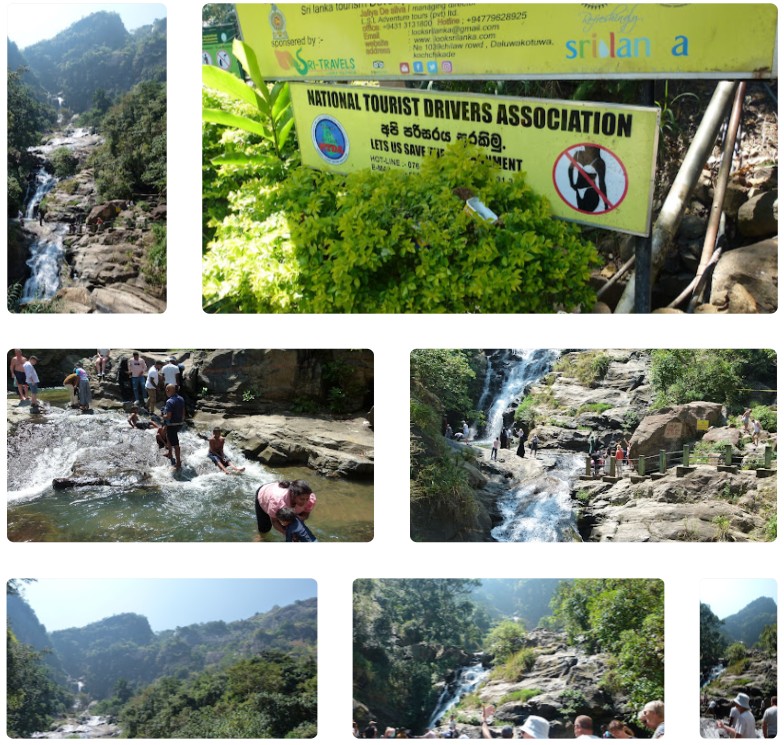
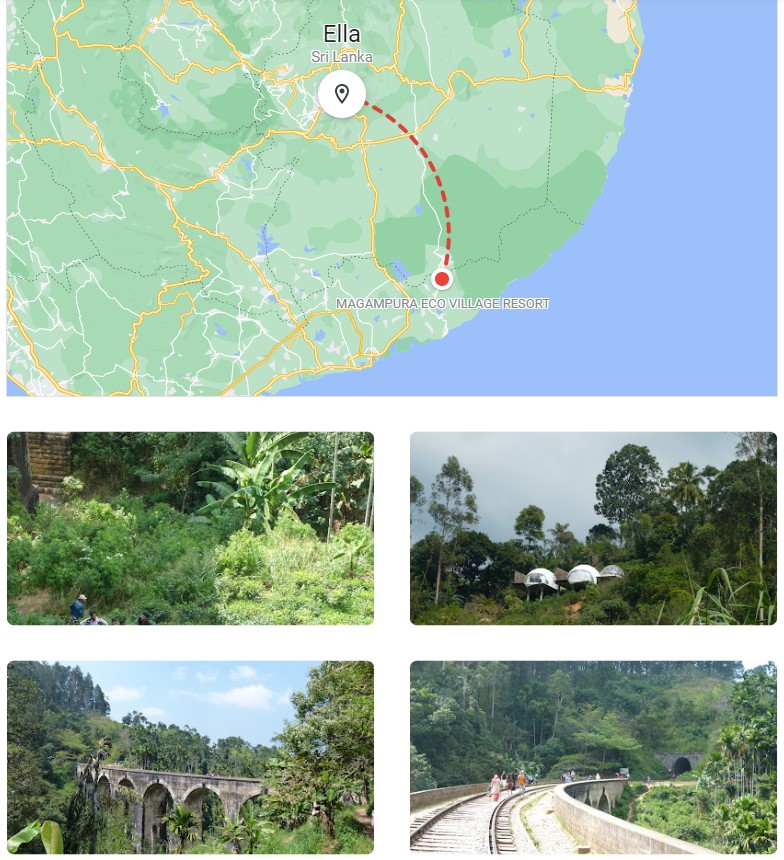
From here we would walk, along the railway track, up to Ella station. Wendy led the way.
It's an active railway but trains are not frequent and one had just passed as we set out.
The railway is a tribute to Victorian engineering. It's wide gauge (5' 6"), single track, with passing loops and numerous tunnels. It winds its way all the way down to Colombo. Just surveying the route, before construction, must have been a herculean task.
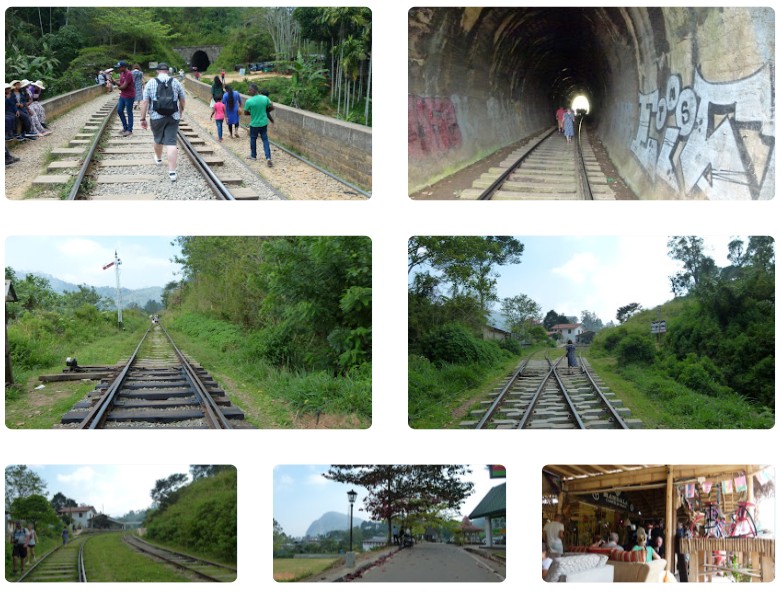
Above: Ella Station and bar - the best mojitos of the trip
Stragglers in our party arrived half an hour later, by which time we'd finished our mojitos in the pleasant bar near the station.
The next stop was nearby Bandarawela. The Bandarawela Hotel is a century-old British-colonial property built during the development of the hill-country railway. As we guessed, judging by the general milieu, the hotel had a 'European Only' policy until Sri Lankan independence in 1948.
At over 1,230 m (4,040 ft) above sea level it's known as Sri Lanka's first mountain resort hotel, "consisting of 33 comfortable colonial rooms with British furniture".
We liked it and spent quite a bit of time in the well-stocked bar. The back door of our big, traditional bathroom opened into a pleasant garden retreat.
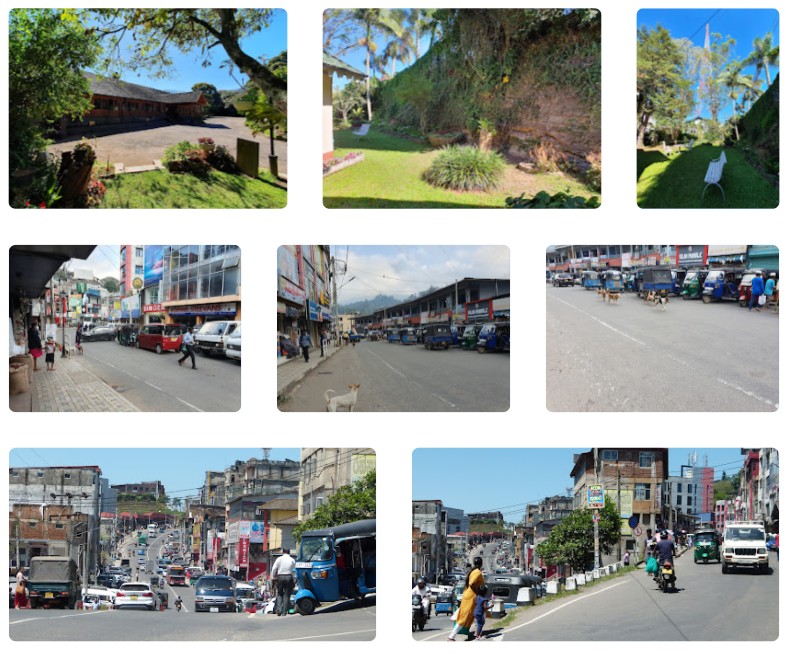
We were not so keen on the town, that, in places, smells of sewerage, and has at least one feral dog pack.
As we had the best part of a day to explore, we got a tuk-tuk back to Ella, through the tea country.
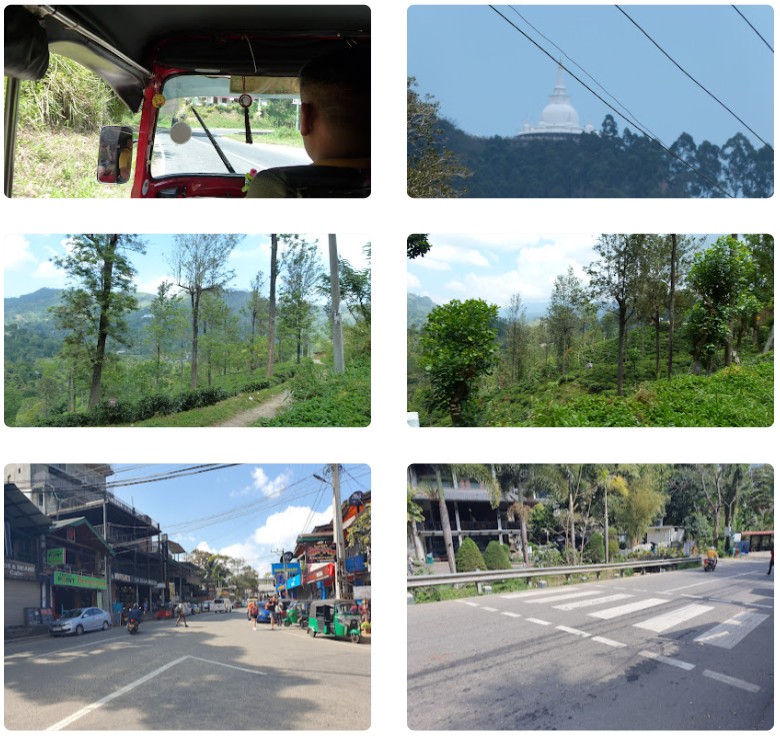
Ella resembles hippy influenced resort towns everywhere - think Byron Bay or Bali: Candles, cotton, crystals, German tourists, but most importantly cafes' and bars and restaurants. On the way back was this intriguing pedestrian crossing. The guard-rail had a considerable drop on the other side.
Leaving Bandarawela we again travelled through tea country to Nuwara Eliya.
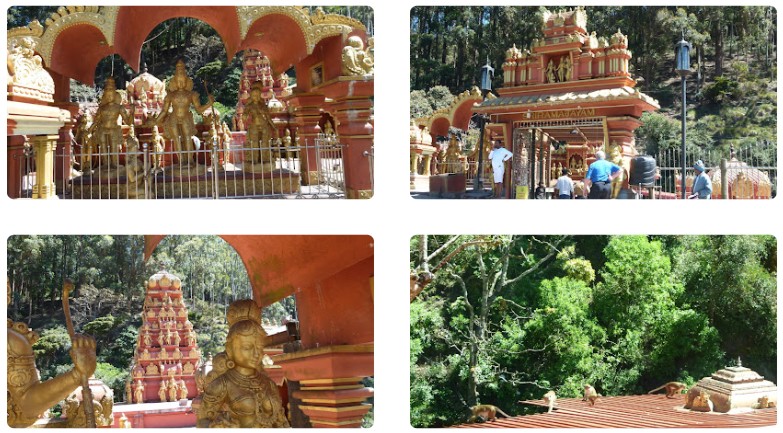
The tea pickers are largely (all?) Tamil and thus Hindu, so this temple is well attended. The monkeys like it too.
Nuwara Eliya
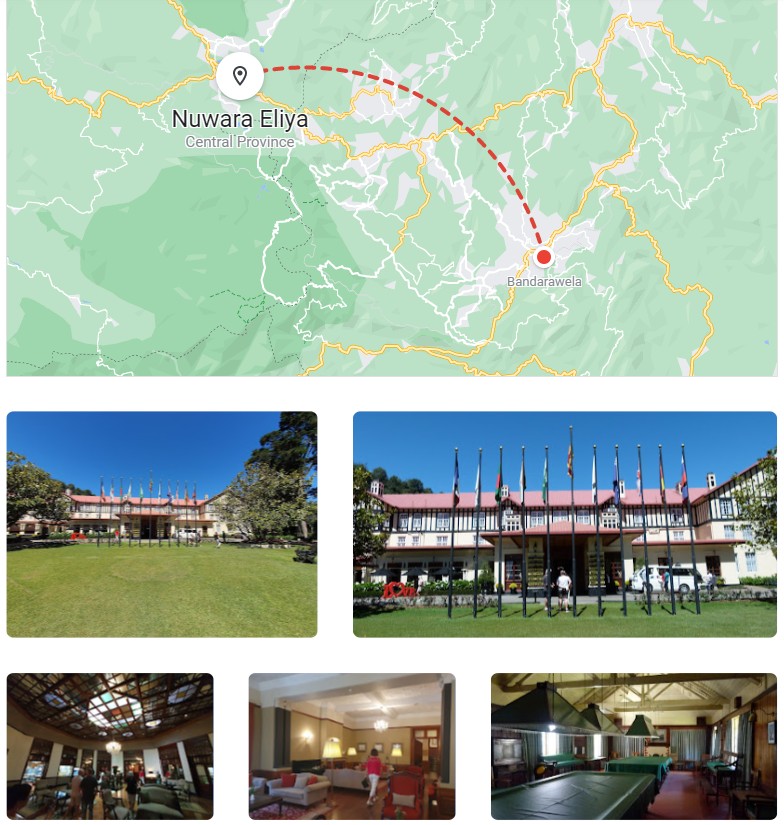
In Nuwara Eliya the British Raj lives on, in the form of the Grand Hotel.
Being 'foreigners' we were able to use the bathrooms and look around. Locals are not, unless guests. Indeed, throughout the country there are 'first-class' and 'foreigner only' toilets.
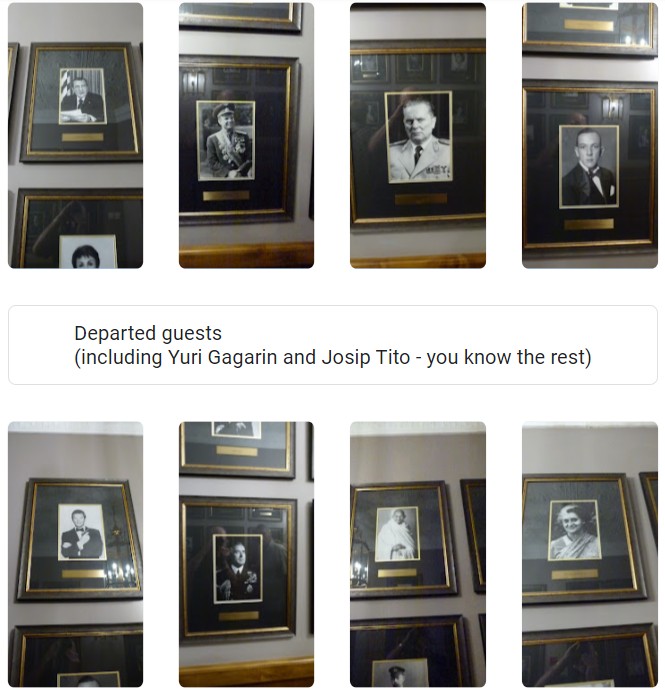
The local park is, of course, 'Victoria Park' and there is a small Market there (mini-Melbourne) with lots of produce, including several unfamiliar vegetables and curry ingredients. It was the first time I've consciously been aware of a goat carcass in a butcher's shop.
Below is the Post Office - preserved - just as it was.

Although Ceylon soon became famous for tea, the first mega-crop grown here by British planters, was coffee but when that contracted a blight they switched to tea, importing Tamil pickers from India.
As the radio commercial went in my youth: "The teas that please are Ceylonese"
Apparently the Singhalese were a bit 'uppity' about picking (as I would be). Wendy had a go and managed a small handful. To make a poor living today they still need to pick at least 20 kgs a day.
Now vast areas of the highlands are covered in small tea bushes and many of the fields are so steep that mechanical picking, as we have seen in Japan, seems an impossibility.
Yet, surely that doesn't preclude some sort of hand-held shear and vacuum device to save their backs and improve productivity?

From the fields, the bags of leaves are picked up and taken to a factory where they are dried.
Green tea is further cut and dried but black tea is then allowed to 'ferment' before being fully died, destemmed and sifted for size. Other flavours, like bergamot, to make Earl Grey tea, may then be added.
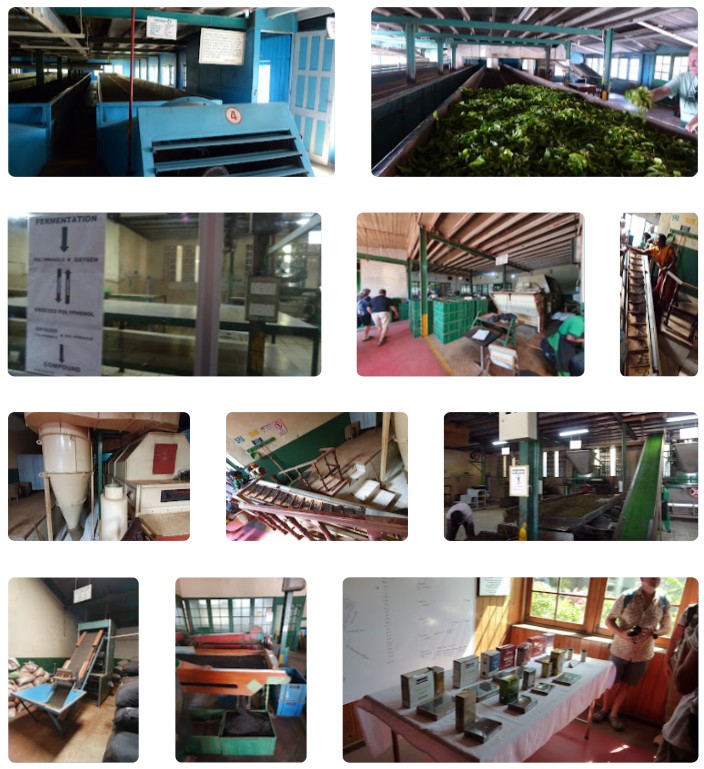
Tea remains a principal mercantile export (around 10% by value), after clothing and textile manufacture (47%).
That night we did not have the pleasure of staying at the Grand but we were very content with the Ramboda Falls Hotel.
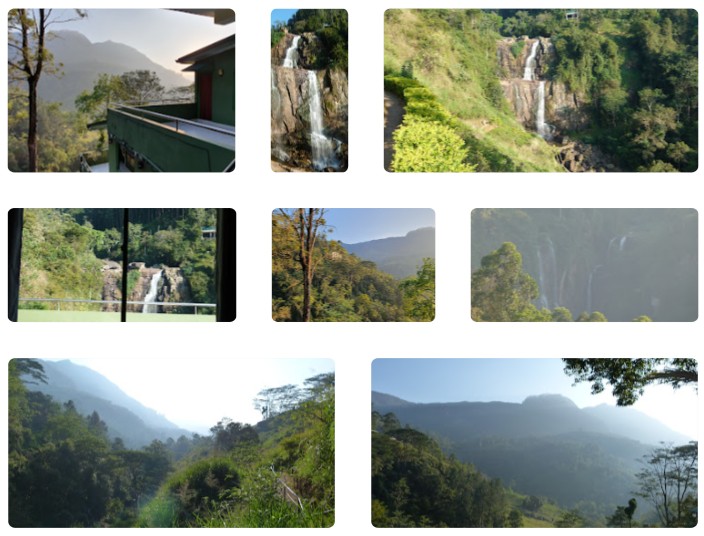
We had a small suite and the falls were directly out the bedroom window. The only downside - discovered by one of our travelling companions - was the monkeys - she just had to leave a window open. Her room was trashed. But we were all warned.
Train to Kandy
After breakfast, we were taken to the Nanuoya Railway Station, for the four-hour train journey, almost to Kandy (the stop before - Randles Hill).
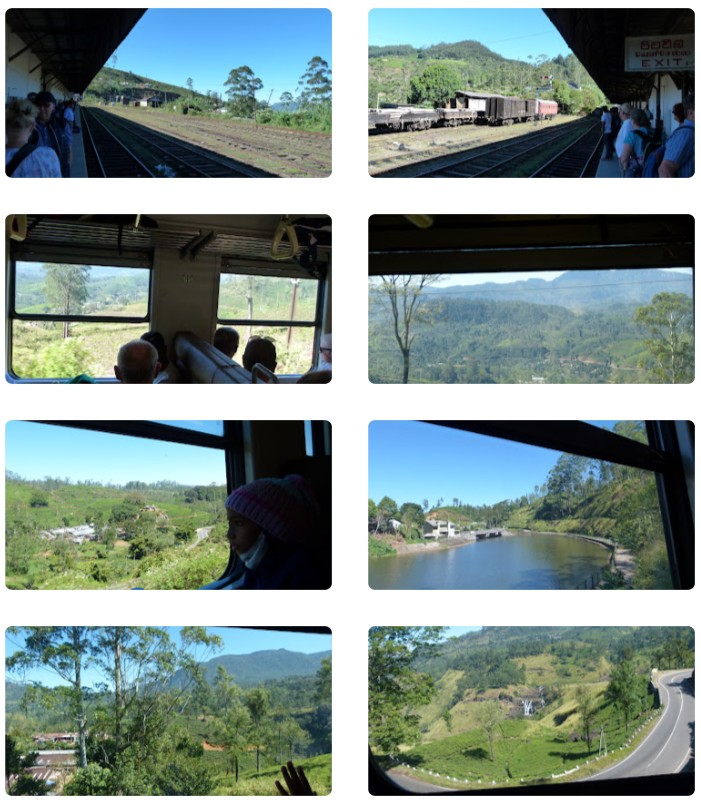
The train was very late. The bus with our luggage got there long before we did, in part because the road is shorter than the rail line, that needed to follow the contours to achieve a manageable gradient for Victorian Era locomotives.
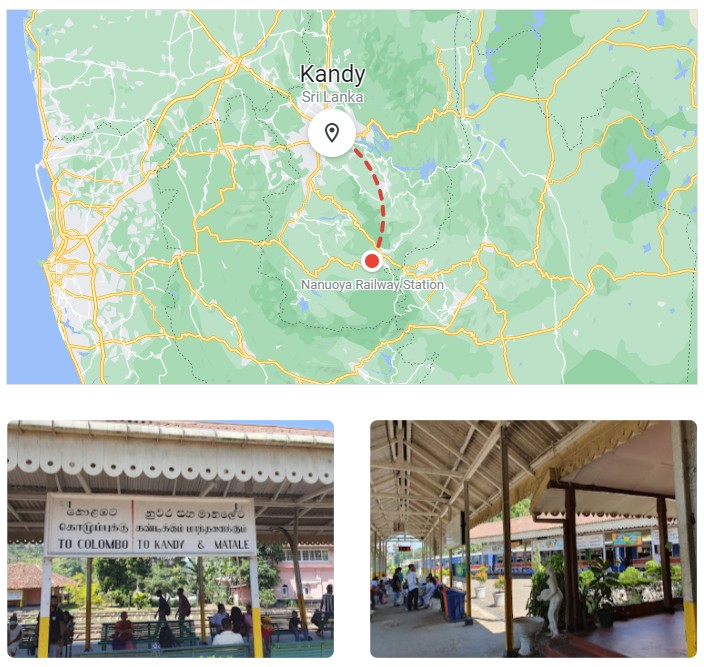
Kandy was the capital of the Kandy Empire (1514 - 1815). Like India and the middle east, the island of Sri Lanka was civilised (has had towns and kingdoms) for at least 500 years before the common era (BCE).
The principles of Buddhism were first written down here. Yet as we know from history, one of the functions of human civilisation and of kings (also known as war lords) is to make war on one's weaker neighbours and amass territory; power and; prestige. Such kings are typically called 'great'. Those who fail to correctly judge their target go down as foolhardy or are forgotten.
Thus, the last kingdom to control the entire island, before British rule, was the Kingdom of Kotte under the Chinese (Ming) backed Parakramabahu VI, the great.
Unfortunately for him, soon after conquering all those weaker than he, the Portuguese turned up with more modern weapons. Parakramabahu already had primitive firearms, thanks to trade with the Arabs, but the Portuguese had better guns and lots of experience converting or slaughtering uncooperative heathens elsewhere, thanks to the Pope's imprimatur.
Among the previously subjugated local kingdoms Kandy now saw the opportunity to do a deal with the new arrivals. Thus, the Portuguese would accept Kandian sovereignty over the highlands in return for an undisputed coastal trading base and port.
When the Dutch East India Company defeated and supplanted the Portuguese, they attempted, unsuccessfully, to overthrow the Kandy kingdom that, as is evident from the architecture, was no back-woods pushover.
Kandy has an ancient man-made lake and substantial historic buildings, including: the Palace complex; the Queen's swimming baths; and the Temple of the Tooth Relic, housing a tooth, reputed to have been shed by the Buddha, during his 2nd visit to the Island in 523 BCE. It has been in the care of various kings, and now the republic, ever since. Possession of this tooth has traditionally provided divine authority to rule.
The Dutch Company's locally recruited army was ignominiously routed and they too kept to the coast. So, it was not for some time after the British East India Company replaced the Dutch and consolidated their hold on the coast that, like the sub-continent and Burma, Kandy was forced to accept British sovereignty.
Earlier in the day, we were taken to a jewellery factory, that sets local gems. Ceylon sapphires have been particularly favoured by European jewellers for centuries. But the stones are rare and other, less precious, stones predominate. Nevertheless, gems and jewellery still contribute around 2% to Sri Lanka's mercantile exports.
Unfortunately, although I found the factory interesting, the accompanying sales pitch to our companions went on for far too long (cutting into potential market time).
That evening a: 'Sri Lankan Cultural Performance' and a 'Kandy market and Bazaar Tour' were scheduled. The start was delayed and to Wendy's further annoyance, the 'cultural event' went for so long that the market tour was aborted.
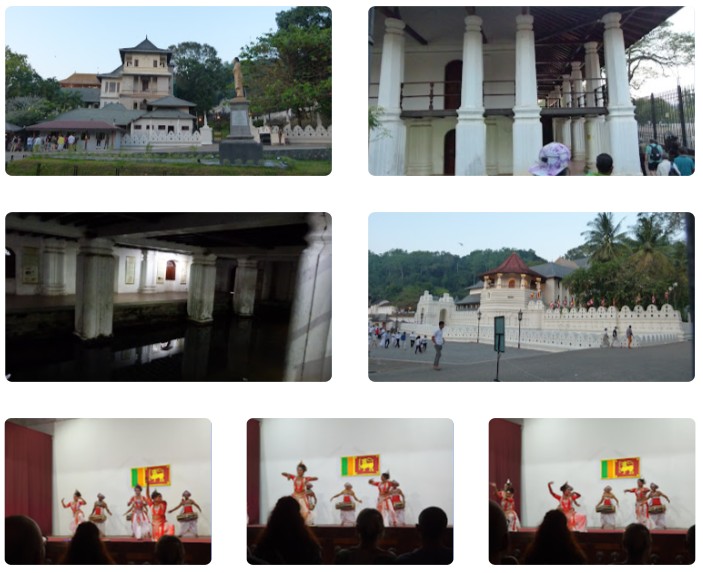
I missed most of this dubiously choreographed pastiche, as I fell asleep - until unseated - for the fire-walking on kerosene-soaked boards (authentic village culture, really?).
We just managed to get to the markets and buy a few designer clothes before everything closed.
Yet, this late-night foray was fortuitous, because we found a Pub, upstairs in the main street, that in addition to a very acceptable Spanish wine, had excellent meals - if Wendy's was little too big to finish.
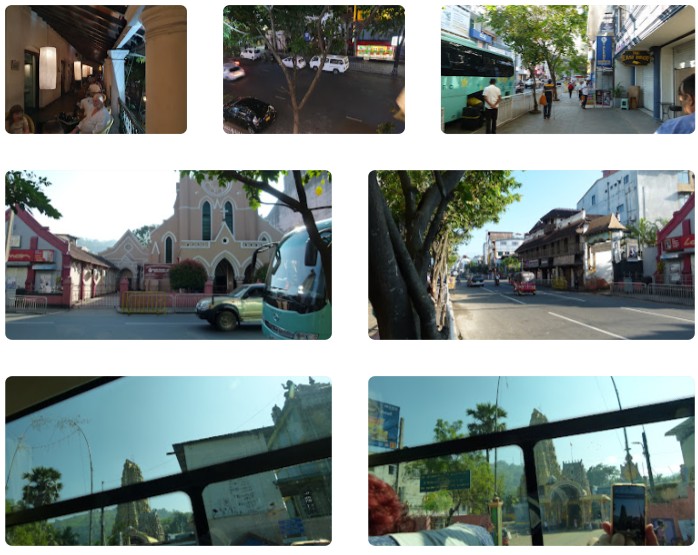
Most of our party had eaten earlier at a place next door to the hotel and several were not at all complimentary about the experience, as we departed on the bus the next morning.
As is true of many countries, tourism is important source of foreign exchange to Sri Lanka. 2018 was a peak year, with over three million tourist arrivals. But this enthusiasm was short-lived, due to Islamic terrorism (ISIS related) against Christian congregations and foreigners (several leading hotels were also bombed).
As India's 'Observer Research Foundation' observes: "Tourism in Sri Lanka accounts for almost 12 percent of the country’s GDP and is the third-largest source of foreign exchange reserves—behind worker remittances and the apparel industry. However, the 2019 Easter Sunday Bombings marked the beginning of the collapse of this industry. This was followed by the double-whammy of the COVID-19 pandemic and the Ukraine–Russia conflict amidst the current economic crisis in Sri Lanka—undoubtedly making the revival of this sector extremely challenging."
Last year tourist arrivals recovered somewhat to: 700,000 up from 195,000 the previous year.
Of less importance than tourism, yet still significant to the economy, is spice (around 4% of mercantile trade by value). The most important of these is cinnamon, followed by pepper.
Historically Sri Lanka was known as the island of cinnamon and was frequented by Arab traders, long before the Europeans discovered it.
At that time, exotic spices were worth much more than their weight in gold in Europe. For example, in 1500, in Venice, you could buy about 1.6 grams of pepper for a ducat. A ducat contained 3.545g of pure gold, thus pepper was worth more than twice its weight in gold, making a shipload of pepper twice as valuable to a trader as a shipload of gold bullion. Yet, pepper was relatively inexpensive, by weight, compared to cinnamon or nutmeg, a reputed aphrodisiac.
We stopped at a spice farm. If you believed this guy, there's a spice for every ill and modern medicine is entirely beholding to plant products - think aspirin (willow bark) digitalis (nightshade), novocaine (cocaine), and, of course, opium.
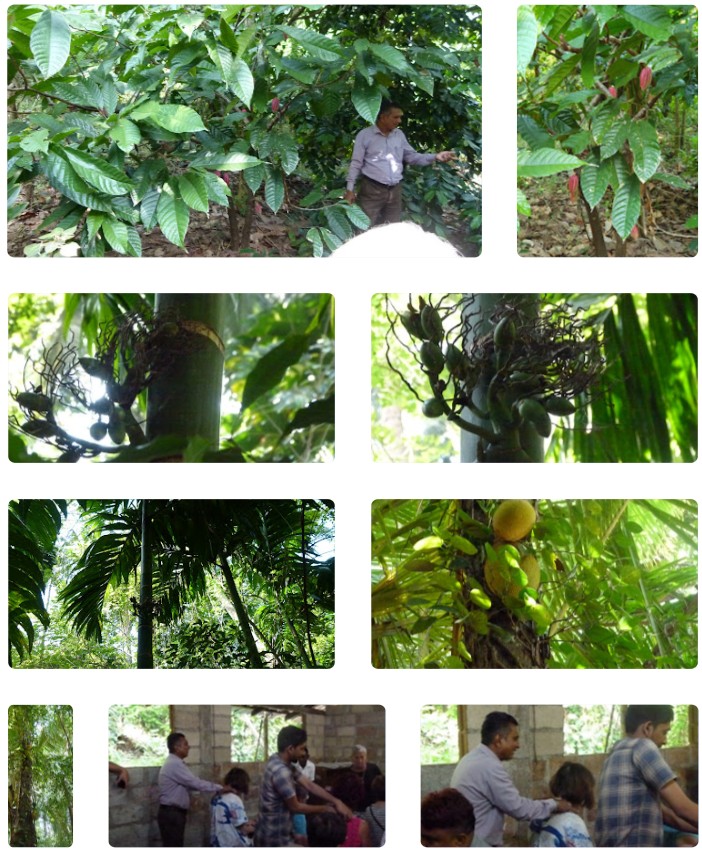
He was a very good 'snake oil salesman' and almost all the women on our bus came away with something.
Yet, the Betel Nuts stayed on the tree - strictly for local consumption I suppose.
Sigiriya
From the highlands we descended to Sigiriya, location of the ancient capital and of the Dambulla Cave Temples dating from the second century BCE. The largest of these has been dated to circa 80 BCE.
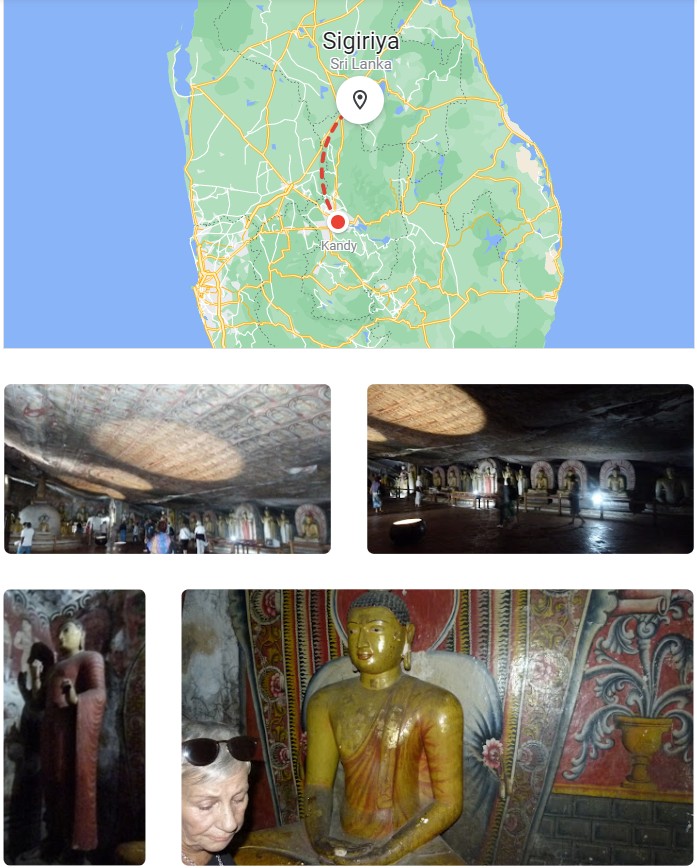
The Dambulla Cave Temples are a massive undertaking - extending over more than two thousand years.
According to Wikipedia the official religion of Sri Lanka is Buddhism (70.2% of the population) with other religions relative late commers as follows: Hinduism 12.6%; Islam 9.7%; Christianity 7.4%; Other/None 0.1%.
I fall into the last group and, when we travel (for example to Egypt or Greece or Cambodia or Myanmar), I often look on in wonder at the vastness of human life and physical resources that have been consumed in pursuit of... what? Nirvana; eternity; prestige; or dare I say: power over others?
The Sigiriya Jungles Hotel is also close to the Minneriya National Park, noted for its elephants. On our way we encountered one on the side of the road - exciting we thought.
Very soon we would join a 'safari' and see many more, a lot closer.
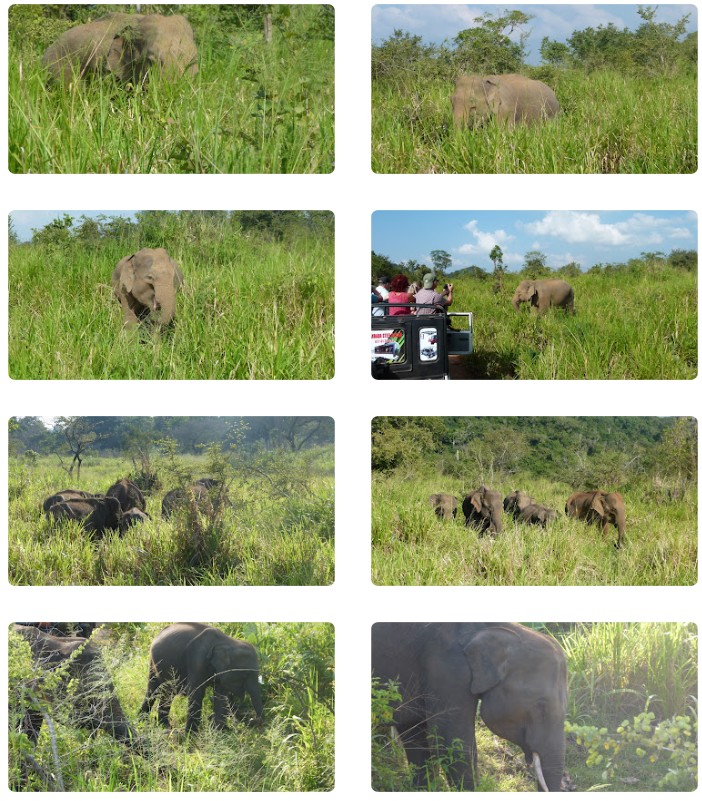
Back at the hotel. a chef showed us how to cook half a dozen different curries. There were some interesting cooking tips. The product was a bit lost on me but Wendy enjoyed them.
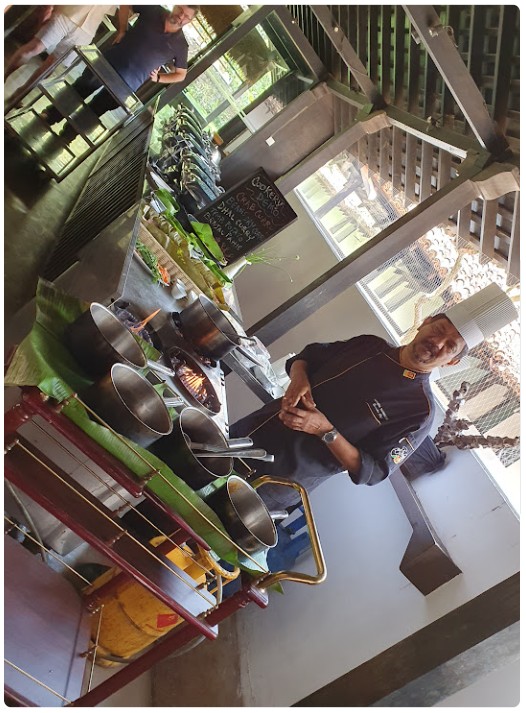
Sigiriya is also the location of the famous Rock Fortress and the nearby ruins of the ancient capital of Polonnaruwa (both UNESCO heritage sites).
The next day, those who wanted to climb the Rock Fortress did so. But the 5am start deterred us and schadenfreude was on our side - it was too misty to see the promised vista.
After a leisurely breakfast, awaiting the early bird's return, we all visited the similarly ancient medieval ruins of Polonnaruwa. We started with a visit to the 'great' king - carved in stone.
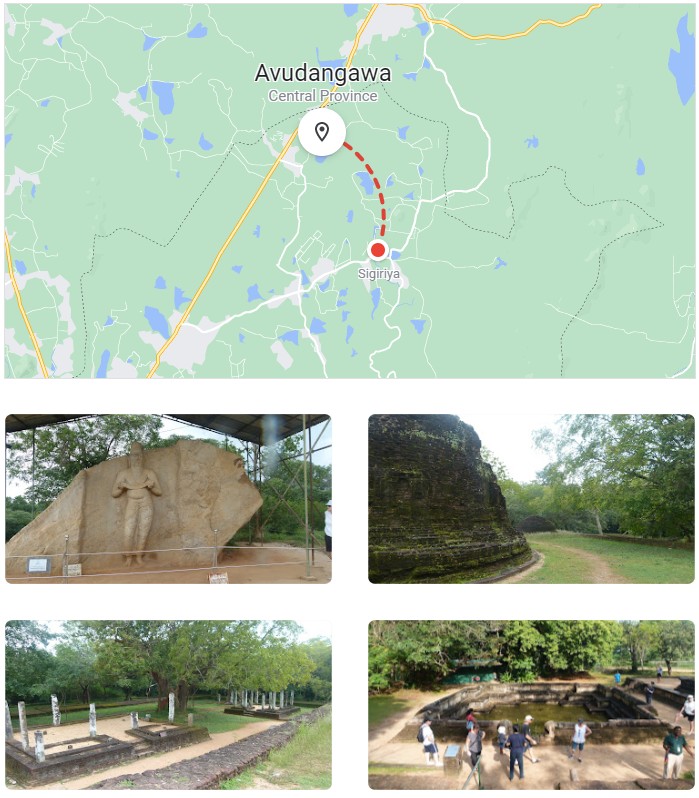
I was impressed by the vast quantities of kiln-fired bricks, of several different dimensions, suggesting construction over a considerable period - some perhaps modern (?) - involved in these structures.
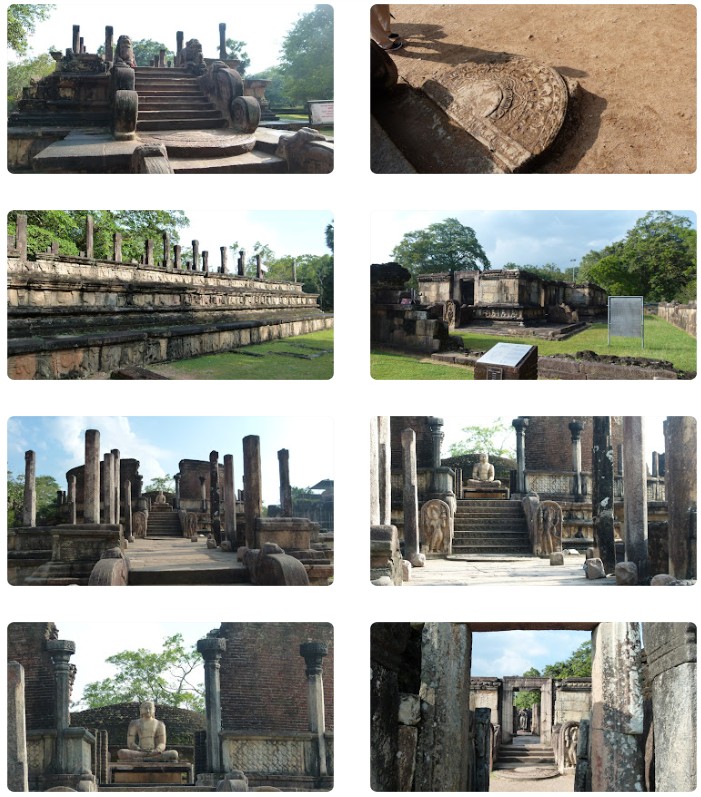
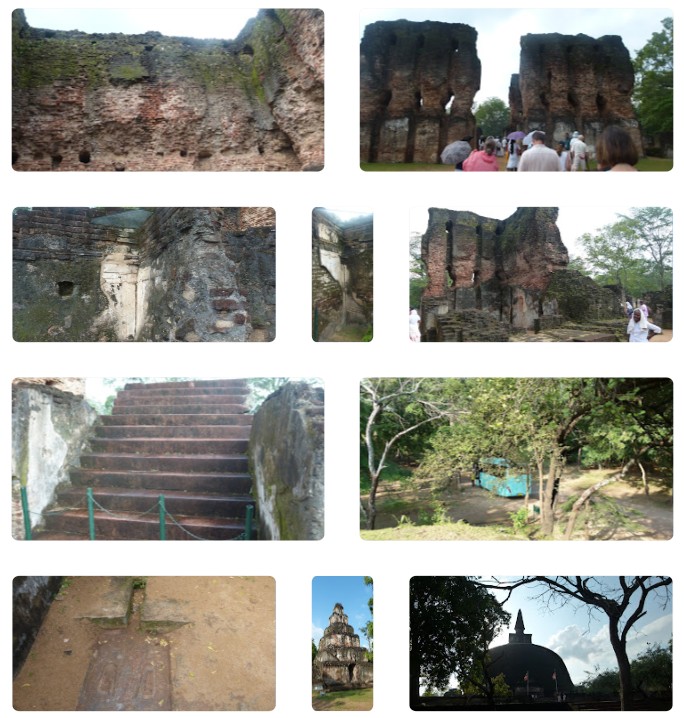
The pyramid-shaped, seven storied building, above, is thought to be an unusually shaped stupa, built during the Polonnaruwa Period (11th -13th century).
Similar Stupa’s can be seen in Cambodia and Thailand. So, it's thought this was built for Cambodian soldiers who were mercenaries employed by the great king.
The huge bun-shaped stupa is the largest all-brick stupa in the world.
Below is another temple complex. I photographed it from a distance as I was wearing shorts and Buddhists are offended by bare knees. Previously, I'd wrapped them up but by this stage I was Buddha'd out.

Negombo
Our penultimate stop of the trip - prior to Colombo Airport - was Negombo.
On a more secular level, on our way back to the coast, we stopped at this place for lunch at the café. It was hosting a wedding planning exhibition and in its own way was fascinating - as was the bizarrely incompetent management of the café. Like an episode of 'Fawlty Towers'.
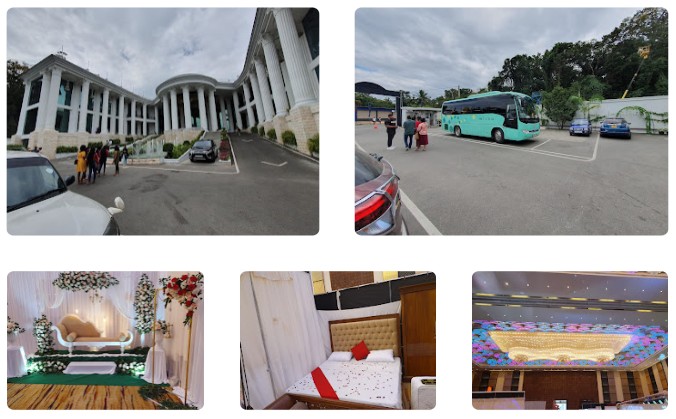
Since we had descended from the highlands, rice had again replaced tea as the predominant crop. It's the staple and almost entirely for domestic consumption. These days it's mechanically harvested and bagged, replacing several steps of back breaking manual labour.
Other important crops include rubber, coconuts, palm oil, bananas, and pineapples, as well as a variety of other fruit and vegetables.

Here we had a visit to the fish markets; walked with goats; and relaxed at the Goldi Sands Hotel (resort).
Time to go home.

